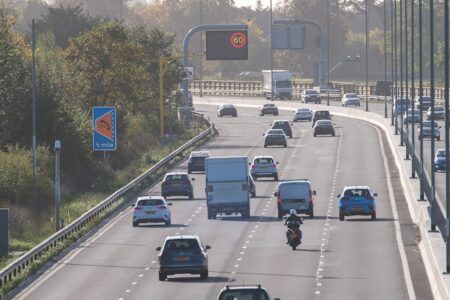BMW has developed an optional ‘Intelligent Emergency Call’ system for its motorcycle range that is intended to get help to the accident or emergency scene as fast as possible, which is particularly important for such vulnerable road users.
Getting help to the scene of an accident or emergency as fast as possible can save lives, which applies especially to motorcyclists, so BMW’s Motorrad division has developed the optional Intelligent Emergency Call system that is intended to speed up emergency response. In the case of an accident, a vehicle-integrated eCall system can mean the difference between life and death, as has already been shown in 2011 as part of a pan-European eCall trial involving BMW vehicles, where emergency services were able to respond more quickly and get to the scene of the accident 40-50% faster.
The European Commission in charge of the trial at the time estimated that using an eCall system would save up to 2,500 lives every year, while also 26bn (US$29.7bn) in the process. eCall was used for the first time in BMW automobiles in 1999 in Europe. In 2007, the BMW Group extended this safety system by establishing an intelligent and cross-border call center infrastructure. From 2018, eCall will become mandatory for all new cars within the EU. Due to the synergy with BMW Automobiles, the system is expected to be available on the company’s motorcycles, as an option from the beginning of 2017.
In the case of an emergency or an accident, the intelligent eCall system, which is either automatically or manually triggered, sends out the position data, including the coordinates of the motorcycle accident site, to the qualified BMW Call Center to initiate the rescue chain.
The current position, as well as information for determining the direction of travel, are transmitted to simplify locating the motorcyclist in hard-to-find locations, such as motorway junctions. eCall requires a connection to the mobile phone network in order to trigger the rescue chain. In the Intelligent Emergency Call option, the connection is established via the permanently installed mobile communication unit, which requires no specific mobile operator, just a network connection.
In the case of a bad fall/collision, the emergency call is automatically triggered without time delay, sending a message to a qualified BMW Call Center, and accident victim/rider is taken care of via audio connection until the emergency service arrives. In the case of a minor fall/collision, the emergency call is only triggered after 25 seconds before sending a message to the BMW Call Center, and if no help is necessary, the rider has the opportunity of cancelling the emergency call at the press of a button. The emergency call can also be triggered manually, but only when the motorcycle is stationary with the ignition on.
The emergency call system option is located on the right side of the handlebar, and in addition to the cover-protected SOS button used for triggering or canceling an emergency call, a microphone and loudspeaker have also been integrated. Sensors on the motorcycle detect what type of event has occurred. A crash sensor detects events such as collisions with another vehicle or crashing into an obstruction. A banking angle sensor detects what position the motorcycle is in. The emergency call is not triggered automatically in non-emergency situations, such as if the bike falls over in a stationary position; or in accidents at low speeds with no other traffic user involved; or by a shock to the bike when riding over a pothole or while off-road riding.




